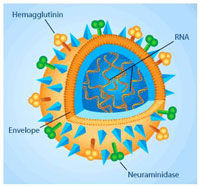IRSF announces translational research award funding to test potential therapeutics for Rett syndrome
ANGEL Award for novel therapies to improve breathing and other symptoms
The International Rett Syndrome Foundation (IRSF) announced that it will commit $446,000 in 2010 to fund a large translational research program to test potential therapeutics for Rett Syndrome in mouse models of the disease. The funds will be awarded through the IRSF's new Advanced Neurotherapeutic Grant of Excellence (ANGEL) mechanism which seeks to provide funds for translational research.
The program will be carried out by a team of researchers at Case Western Reserve University School of Medicine, led by David M. Katz, Ph.D., Professor of Neurosciences. Building on previous proof-of-concept studies conducted in Dr. Katz's laboratory, the new program will evaluate existing drugs, as well as molecules under development, which may improve breathing problems – one of the more serious complications of the disease – as well as other aspects of Rett syndrome. The researchers will systematically assess several classes of compounds, with a particular focus on improving neuronal signaling mediated by Brain Derived Neurotrophic Factor (BDNF), a key molecule implicated in Rett syndrome.
Part of the study will examine drugs that are currently in development for other neurological disorders including Alzheimer's and Huntington's disease which will be provided by Dr. Frank Longo Professor of Neurology and Neurological Sciences at Stanford University. Dr. Longo founded the biotechnology company PharmatrophiX to further develop and commercialize these drugs. Said Dr. Longo "Studies by Dr. Katz and others indicate that compromised BDNF expression might contribute to Rett syndrome. We have developed the first small molecules that mimic a specific domain of the BDNF protein and activate the BDNF receptor; TrkB. Dr. Katz's studies provide an exciting opportunity to determine the therapeutic potential of these molecules for Rett syndrome."
Other news from the department science

Get the life science industry in your inbox
By submitting this form you agree that LUMITOS AG will send you the newsletter(s) selected above by email. Your data will not be passed on to third parties. Your data will be stored and processed in accordance with our data protection regulations. LUMITOS may contact you by email for the purpose of advertising or market and opinion surveys. You can revoke your consent at any time without giving reasons to LUMITOS AG, Ernst-Augustin-Str. 2, 12489 Berlin, Germany or by e-mail at revoke@lumitos.com with effect for the future. In addition, each email contains a link to unsubscribe from the corresponding newsletter.





















































